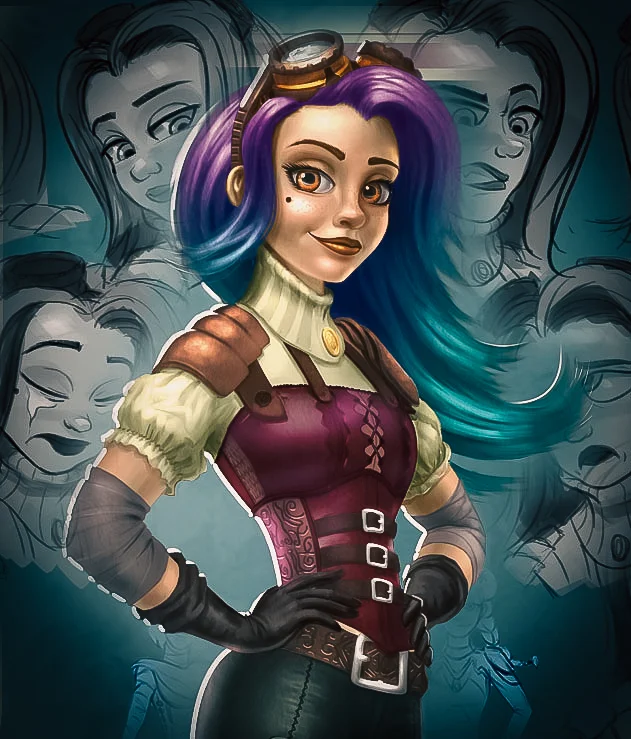 Image by: VANAS Plus, Garman Herigstad
Image by: VANAS Plus, Garman Herigstad
VFX Lighting, Tips for Beginners
Did you know that special effects lighting is one of the key elements that bring visual effects to life on the big screen? From epic explosions to breathtaking magical spells, VFX lighting plays a crucial role in creating cinematic experiences that leave audiences in awe.
If you're just starting your journey into the world of visual effects, understanding the art of VFX lighting is essential. In this article, we will provide you with valuable tips and techniques to help you master the craft of special effects lighting, unleashing your creativity and taking your visual effects to new heights.
Key Takeaways:
- Special effects lighting is a vital component of visual effects.
- Mastering VFX lighting techniques is essential for creating realistic and stunning visual effects.
- Understanding the role of light in visual effects is crucial for transforming scenes and immersing viewers.
- Creating realistic atmospheric lighting adds depth, mood, and atmosphere to your visual effects.
- Mastering lighting software and tools is key to achieving professional-level VFX lighting.
Understanding VFX Lighting Techniques
When it comes to creating stunning visual effects, understanding the various VFX lighting techniques is essential. With the help of digital lighting effects and CGI lighting techniques, you can bring your visual effects to a whole new level of realism and impact.
One of the key aspects of VFX lighting is its role in creating believable and immersive scenes. Lighting design for VFX plays a crucial role in setting the mood, establishing the atmosphere, and highlighting important elements within the composition.
Through the use of digital lighting effects, you can manipulate the perception of light, create unique shadows, and add depth to your scenes. Whether you're working on a sci-fi spaceship, a fantasy landscape, or a thrilling action sequence, understanding how to utilize CGI lighting techniques will enable you to achieve the desired impact.
Digital Lighting Effects
VFX lighting techniques allow you to harness the power of digital lighting effects to enhance your visual effects. By mastering the art of digital lighting, you can create realistic light sources, simulate reflections, and cast accurate shadows. These techniques allow you to control the mood and atmosphere of your scenes, capturing the essence of the story you're trying to tell.
CGI Lighting Techniques
CGI lighting techniques offer a wide range of possibilities for creating breathtaking visual effects. From simulating natural sunlight to crafting intricate artificial lighting setups, CGI lighting techniques allow you to manipulate light in ways that were previously unimaginable. By mastering these techniques, you can bring your vision to life, captivating your audience with stunning and immersive visuals.
When it comes to VFX lighting, the right techniques and design choices can make all the difference. By understanding the power of digital lighting effects and CGI lighting techniques, you can take your visual effects to new heights. So, dive into the world of VFX lighting and harness the full potential of light to create awe-inspiring and captivating visual experiences.
The Role of Light in Visual Effects
Light is a fundamental element in the world of visual effects. It plays a crucial role in transforming scenes and bringing them to life. Through virtual lighting effects, visual effects artists can create stunning cinematic experiences that captivate audiences.
One of the key tools in visual effects lighting is computer-generated lighting. This technology allows artists to manipulate light sources and control their intensity, direction, and color. Computer-generated lighting opens up a world of possibilities, enabling artists to achieve realistic and dramatic lighting effects that enhance the overall visual experience.
Imagine a scene set in an enchanted forest at night. With virtual lighting effects, the artist can add a soft, mystical glow to the moon, creating an ethereal ambiance. They can also control the shadows cast by the trees, adding depth and mystery to the scene. Computer-generated lighting allows for precise control over every aspect of the lighting, ensuring a visually captivating and immersive experience for the audience.
Virtual lighting effects and computer-generated lighting give visual effects artists the power to create breathtaking visuals that transport viewers into new worlds.
Moreover, virtual lighting effects contribute to the overall storytelling aspect of visual effects. They can evoke specific emotions, guide the viewer's attention, and enhance the atmosphere of a scene. Whether it's the intense lighting in a high-action sequence or the subtle nuances in a character's expressions, lighting sets the mood and helps convey the intended message to the audience.
In conclusion, virtual lighting effects and computer-generated lighting are indispensable tools in the world of visual effects. They enable artists to create immersive and realistic environments, evoke emotions, and elevate the overall visual experience. By harnessing the power of light, visual effects artists can bring their creative visions to life and leave a lasting impression on viewers.
Creating Realistic Atmospheric Lighting
In the world of visual effects (VFX), lighting plays a crucial role in creating realistic and immersive scenes. One of the key techniques used to achieve this is cinematic lighting effects. By mastering these effects, you can add depth, mood, and atmosphere to your visual effects, elevating them to the next level.
So, how can you create realistic atmospheric lighting in VFX? Here are some essential techniques to consider:
- Understanding Light Sources: To create realistic lighting, it's important to understand how light sources behave in different settings. Study real-life lighting scenarios and apply that knowledge to your VFX scenes.
- Layering Lights: By layering lights of different intensity and color temperatures, you can achieve a more realistic and dynamic lighting setup. Experiment with combining different light sources to create the desired atmospheric effects.
- Shadows and Highlights: Shadows and highlights play a critical role in defining the shape and depth of objects in a scene. Use them strategically to enhance the three-dimensional feel of your VFX.
- Color Grading: Color grading is another powerful tool for creating atmospheric lighting. By tweaking the color tones and hues of your scenes, you can evoke specific emotions and enhance the overall visual impact.
Remember, creating realistic atmospheric lighting in VFX requires careful attention to detail and a deep understanding of how light interacts with objects and environments. Experimentation and practice are key to mastering cinematic lighting effects and taking your visual effects to new heights.
Mastering Lighting Software and Tools
In the world of visual effects, lighting software and tools play a crucial role in bringing your creations to life. To become skilled in VFX lighting, it is essential to understand the various software options and utilize the right tools effectively.
Exploring Lighting Software
When it comes to VFX lighting software, there are several reliable options available in the market. These software programs provide you with the tools and features needed to create stunning lighting effects. Some of the best lighting software for visual effects include:
- Autodesk Maya: A popular choice among VFX artists, Maya offers a wide range of lighting tools and a powerful rendering engine.
- SideFX Houdini: Known for its versatility, Houdini empowers artists to create complex lighting setups and achieve realistic effects.
- Foundry Nuke: Although primarily known for compositing, Nuke also offers robust lighting capabilities, allowing you to fine-tune your visuals.
Utilizing Lighting Tools
In addition to software, mastering VFX lighting requires proficiency in using the right tools. These tools enable you to manipulate light sources, control shadows, and craft the desired atmosphere in your scenes. Here are some essential lighting tools for visual effects:
- Lighting Controllers: These devices help you adjust the intensity, color, and position of lights in a scene, giving you precise control over the lighting setup.
- Gobos and Flags: Gobos and flags are physical accessories that shape and manipulate light, allowing you to create specific lighting patterns or block unwanted light.
- Light Meters: Light meters are invaluable tools for measuring the intensity of light in a scene, ensuring accurate exposure and consistent lighting throughout your project.
Remember, mastering VFX lighting software and tools is an ongoing process. Don't hesitate to experiment, learn from other artists, and refine your skills to achieve breathtaking lighting effects in your visual effects work.
Study Visual Effects at VANAS
If you're passionate about visual effects and dream of becoming a skilled visual effects artist, VANAS is the perfect place for you. By studying visual effects at VANAS, you'll gain the necessary knowledge and skills to excel in the industry.
VANAS offers comprehensive programs that will guide you through the exciting world of VFX lighting. You'll learn from experienced professionals who have worked on blockbuster movies and renowned projects. With their guidance, you'll discover the techniques and tools used in the industry.
As a student at VANAS, you'll have access to cutting-edge technology and software used in the visual effects field. This hands-on experience will allow you to master industry-standard software and develop a deep understanding of lighting techniques for visual effects.
Don't miss out on the opportunity to become a visual effects artist at VANAS. Enroll today and start your journey towards a successful career in the captivating world of visual effects.
FAQ
What is VFX lighting?
VFX lighting, also known as visual effects lighting or special effects lighting, refers to the techniques and processes used to create and enhance lighting effects in computer-generated imagery (CGI) and other visual effects. It involves manipulating light sources, shadows, and reflections to achieve realistic and visually striking scenes.
What are some digital lighting effects in VFX?
Digital lighting effects in VFX include techniques such as volumetric lighting, light flares, light streaks, ambient occlusion, and global illumination. These effects are used to create realistic and immersive environments, enhance mood and atmosphere, and bring visual effects to life.
How important is lighting design in VFX?
Lighting design plays a crucial role in VFX as it sets the tone, mood, and atmosphere of a scene. It helps to create depth and realism in the visual effects, making them more believable and captivating to the audience. Proper lighting design enhances the overall impact and visual quality of the VFX.
What are virtual lighting effects?
Virtual lighting effects are techniques used in VFX to create and manipulate lighting in a virtual or digital environment. These effects help to simulate real-world lighting conditions, including sunlight, shadow casting, and reflection. Virtual lighting effects are essential for achieving a seamless integration of CGI elements with live-action footage.
How does computer-generated lighting impact visual effects?
Computer-generated lighting allows VFX artists to have precise control over lighting in virtual scenes. It enables the creation of dynamic and realistic lighting effects, including accurate shadows, reflections, and light interactions. Computer-generated lighting enhances the overall quality and believability of visual effects.
What are some cinematic lighting effects used in VFX?
Cinematic lighting effects in VFX include techniques such as high contrast lighting, low key lighting, rim lighting, and color grading. These effects are used to evoke specific moods, highlight key elements, and create a visually engaging cinematic experience.
What are some lighting software and tools used in VFX?
Some popular lighting software used in VFX include Autodesk Maya, 3ds Max, Blender, and Houdini. Additionally, various lighting tools, such as Arnold, V-Ray, and Redshift, are commonly used by VFX artists to achieve realistic and captivating lighting effects.
How can I become a skilled visual effects artist at VANAS?
VANAS (Vancouver Animation School) offers comprehensive visual effects programs that can help you become a skilled visual effects artist. By enrolling in their courses, you will gain valuable knowledge and hands-on experience in VFX lighting techniques, lighting software, and industry-standard practices. VANAS provides the platform and guidance necessary to excel in the field of visual effects.







